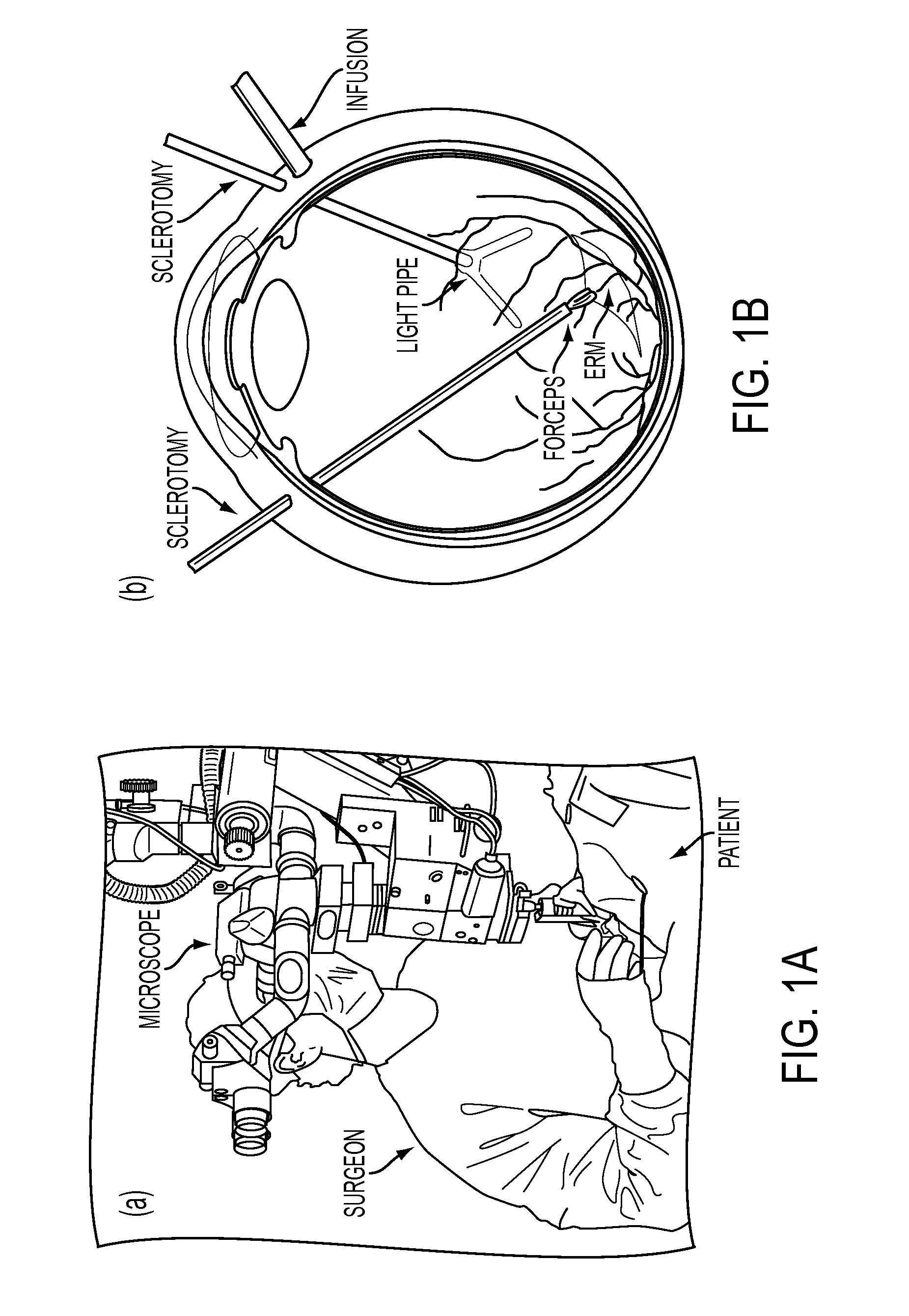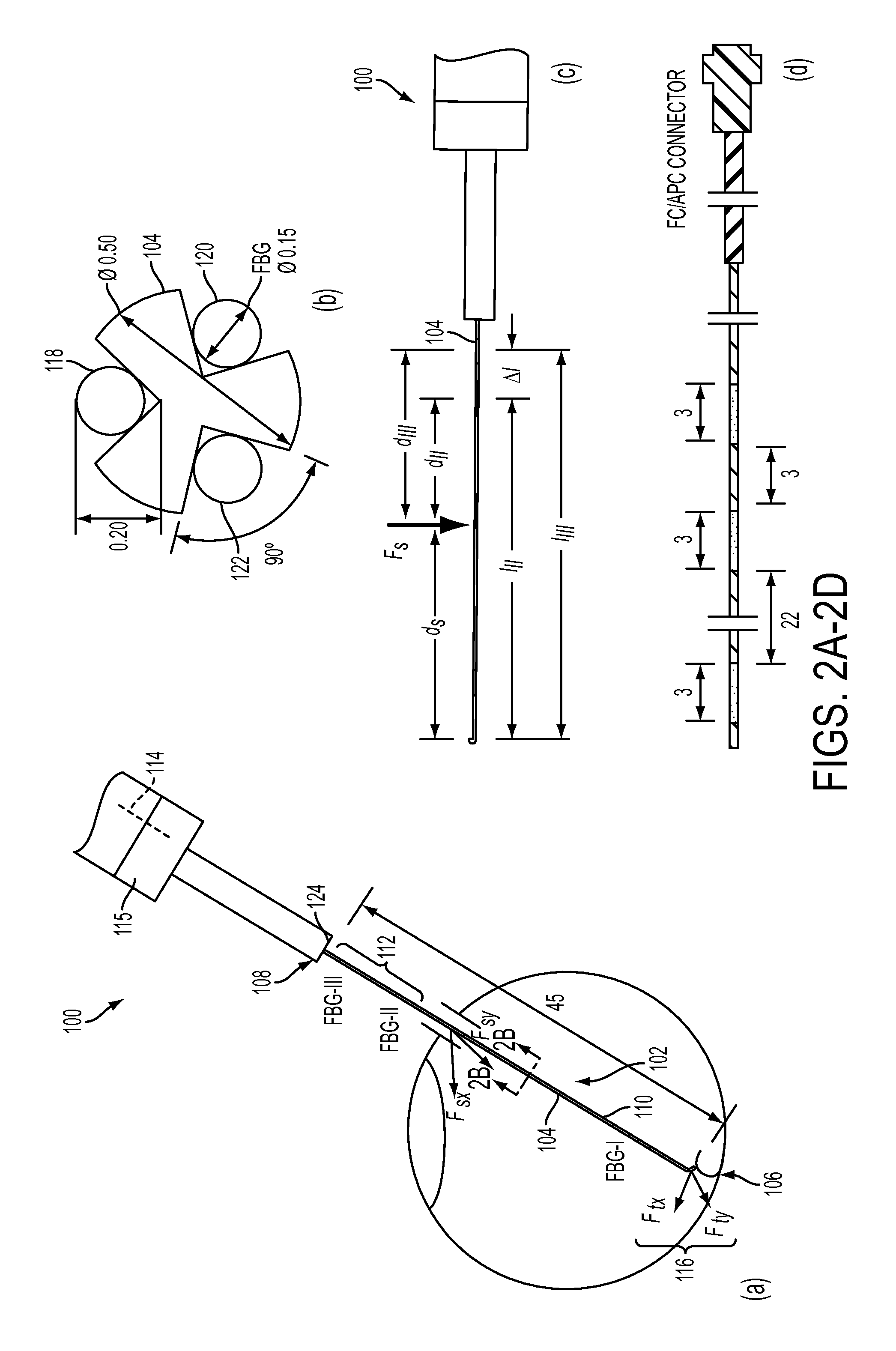Multi-force sensing surgical instrument and method of use for robotic surgical systems
a surgical instrument and multi-force technology, applied in the field of multi-force sensing surgical instruments and robotic systems, can solve problems such as retina hemorrhage and tear, cornea striae, and the risk of excessive force being applied to the retina
- Summary
- Abstract
- Description
- Claims
- Application Information
AI Technical Summary
Benefits of technology
Problems solved by technology
Method used
Image
Examples
examples
[0094]All equation numbers in this example section refer to the equations introduced in this section, and not the equations in the previous section of this specification.
[0095]In following examples, we report a new design of a dual force sensing instrument according to an embodiment of the current invention that can sense not only the sclera force in transverse directions, but also the location of the sclera contact point on the tool shaft. This new dual force sensing instrument enables a variable admittance robot control to provide an intuitive robot behavior. By varying the robot admittance, the robot behavior can continuously transit from an adaptive virtual fixture mode that enforces RCM and adapts to the current location of the sclerotomy site, to a force scaling mode that provides scaled feedback of the sclera force as well as the ability to reposition the eye. Experiments are conducted to calibrate the new dual force sensing instrument, to calibrate the tool tip position with...
PUM
| Property | Measurement | Unit |
|---|---|---|
| Bragg wavelengths | aaaaa | aaaaa |
| Bragg wavelengths | aaaaa | aaaaa |
| Bragg wavelengths | aaaaa | aaaaa |
Abstract
Description
Claims
Application Information
 Login to View More
Login to View More - R&D
- Intellectual Property
- Life Sciences
- Materials
- Tech Scout
- Unparalleled Data Quality
- Higher Quality Content
- 60% Fewer Hallucinations
Browse by: Latest US Patents, China's latest patents, Technical Efficacy Thesaurus, Application Domain, Technology Topic, Popular Technical Reports.
© 2025 PatSnap. All rights reserved.Legal|Privacy policy|Modern Slavery Act Transparency Statement|Sitemap|About US| Contact US: help@patsnap.com



